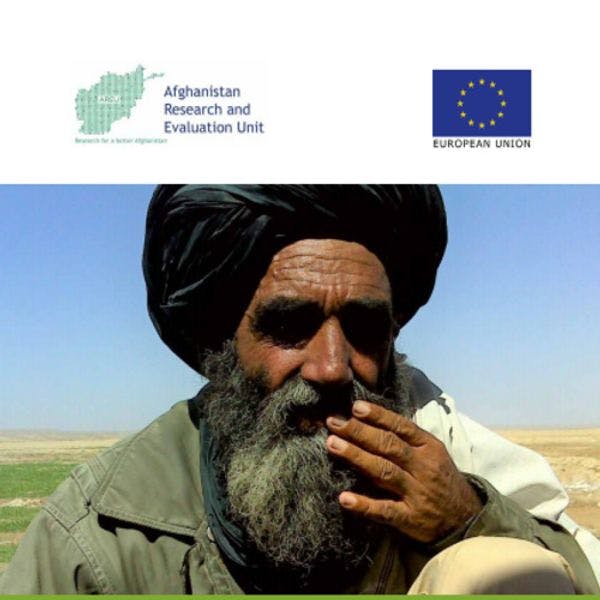The Helmand Food Zone: The illusion of success
By the Afghanistan Research and Evaluation Unit
The Afghanistan Research and Evaluation Unit today launched a research synthesis paper titled “The Helmand Food Zone: The Illusion of Success”. The study is supported by the EU’s three-pronged research in Natural Resources Management in Afghanistan. This study documents how the Helmand Food Zone was developed, its origins and architects, as well as the different actors involved in the implementation and the subsequent challenges of delivery. Initially presented as a drug control project, the Helmand Food Zone came to be accredited for supporting stabilisation and governance in the Helmand province between 2008 and 2012. Driven by political demands rather than evidence, the program became a flagship in Helmand, and lauded as a success, despite evidence to the contrary.
Speaking about the report, AREU Director Dr Orzala Nemat said, “This is timely research as we are heading towards the formation of a new government and a possible peace deal in the coming year. In both of these contexts, addressing the issue of drugs is a key challenge that the future Afghan leadership will have to tackle, in light of the lessons drawn from past practices.”
The study reports that the short term success of the Helmand Food Zone with regards to its association with reducing poppy was far outweighed by the role the programme played in: (i) creating the conditions for unprecedented amounts of land to be brought under poppy cultivation than ever before; (ii) institutionalising forms of corruption that further alienated the rural population from the authorities; and (iii) helping set in motion a process of agricultural intensification that is likely to lead to the displacement of at least half a million people in the next decade.
The paper argues, “However, as yields recovered in 2016 and the Afghan National Defense and Security Forces lost control over larger tracts of rural Helmand, farmers returned to poppy cultivation in ever greater numbers,” adding that “So much so that by 2017, UNODC estimated that there were 144,000 hectares of opium poppy in Helmand as a whole; and the United States Government's estimates of poppy cultivation for the Helmand Food Zone indicated that there was even more poppy within its boundaries than when the programme began in 2009.”
According to the study, the Governor’s reliance on donor patronage from funds to transport and logistics and his pursuit of an opium ban regardless of the impact on rural lives and livelihoods increased the perception amongst farmers that he did not act in the interests of the local population, but of his foreign benefactors. As such, the Helmand Food Zone served to further embed a growing sense of hostility to the provincial authorities and undermine the state-building objectives proffered by the donors as a reason for supporting the intervention.
In fact, from a governance perspective, the study concludes that the Helmand Food Zone worked through and consolidated existing systems of power and patronage, empowering the Governor, officials and village elders to solicit rent and favours from farmers in exchange for development assistance or to avoid eradication. Of particular concern, the Helmand Food Zone turned a blind eye to repeated reports of corruption with regard to the distribution of wheat seed and fertilizers and continued to support the production of unverifiable village lists by district officials and elders with all the problems that this entailed. By doing so, the programme helped institutionalise forms of corruption and fueled the frustration and anger that many rural households felt towards the government and its representatives. By operating through mechanisms that siphoned off support to the wealthy, the Helmand Food Zone helped undermine the very goal that it set out to achieve – the idea that the governor and the government could deliver services to the population.
The study builds on in-depth fieldwork and high-resolution satellite imagery collected before, during and after the implementation of the Helmand Food Zone, as well as interviews with some of the main protagonists in the donor community. In total, 4,122 household interviews took place with farmers over an 11-year period in either all or some of the 28 research sites in Helmand province, in areas both north and south of the Boghra canal. The latest body of fieldwork was conducted in spring 2018 and consisted of 310 interviews in the same research sites, supplemented with a further 52 interviews with women who resided in former desert areas.
